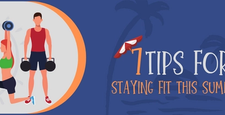Isn’t it amazing how music has the power to move us?
Move us to dance. Move us to sing. Move us to feel. Move us to remember. Move us to tears. And of course what is useful for this purpose, move us to move faster.
A couple of songs in my playlist that move me are Don’t Stop Believing (I like the version from the Rock of Ages soundtrack) and Fight Song by Rachel Platten. These two songs show a couple of the different ways that music can move us, can give us power. Don’t Stop Believing moves me not necessarily because of the words of the song, but more so because of the concept of the title and the idea behind the song -- to not stop believing in myself -- and that whatever it is that I want to accomplish, I can make it happen.
The song just happens to have a good beat to it too, so it works well for a walking playlist.

With Fight Song, the lyrics have a very moving message. I was introduced to this song by my sister-in- law when I was looking for some songs for my walking playlist last summer. I listened to the little clip on iTunes, thought it sounded like it had a good rhythm to it, bought it and added it to the playlist. The first time I listened to the whole song was in the middle of a walk. It moved me so much, I had tears in my eyes before it was over. It felt like the words were describing exactly how I felt when I was approaching the finish line of my first 5k race earlier in the year. Any song that makes me want to get up and move is game for me to add to my playlists. And I can get song inspiration from just about anywhere – playlists shown in magazines, posts asking for song ideas in groups I’m part of on Facebook, TV shows, commercials – literally anywhere! I’ve been known to look up episodes of shows on IMDB to see what a song was or use the app Soundhound to identify one I hear on the radio.
Listening to music during workouts can help you work out longer and make workouts more enjoyable. Besides finding music that makes you want to move, the key to using music to increase your speed is to choose songs with increasing beats per minute (BPM). The higher the BPM, the faster the beat of the music and the faster you’ll want to move!
Now many of you may think, “I go at the pace I go and what I'm listening to doesn't or won't impact it.” And that may be true. But for most, I'm willing to bet your pace is influenced by the pace of the music pumping into your ears, the beat getting into your subconscious. Making your heart beat faster.
Making you move your fingers. Making you tap your toes, if you were sitting down, that is. Making you want to move… faster.
Here are a couple of specific examples of the impact of music on my pace.
Last fall, when I was just getting my weight loss journey in full swing, I had not been finding the time to put together a playlist and was just shuffling my full music library as I walked. Then after I created a walking playlist, I reduced my pace on my next 33-mile walk from 19 minutes 41 seconds (19:41) per mile to 18:58.
Recently, I got a new phone and hadn’t recreated my playlists yet. So instead of being able to listen to one of my usual playlists with high pace songs, I had to go shuffle my library like way back last summer, and it definitely slowed my pace a fair amount not having that structured music.
A couple of good websites I found for checking the BPM of songs are Song BPM and BPM Database. There are also a number of BPM apps, but I haven’t tried them. The BPM you want for music will depend on your activity. There is a good chart available here that provides the BPM for various categories of walking and jogging, as well as running, cycling, stair climbers and ellipticals, and even a suggested BPM for yoga and Pilates.
Create a playlist of songs with similar beats per minute to stay at a steady pace throughout your walk or run. Or sprinkle in songs with higher beats per minute to add faster intervals and increase your overall pace.
Contributed by community member Joanna H.

You can listen to our carefully curated playlist for most of our races on our Spotify Channel



















